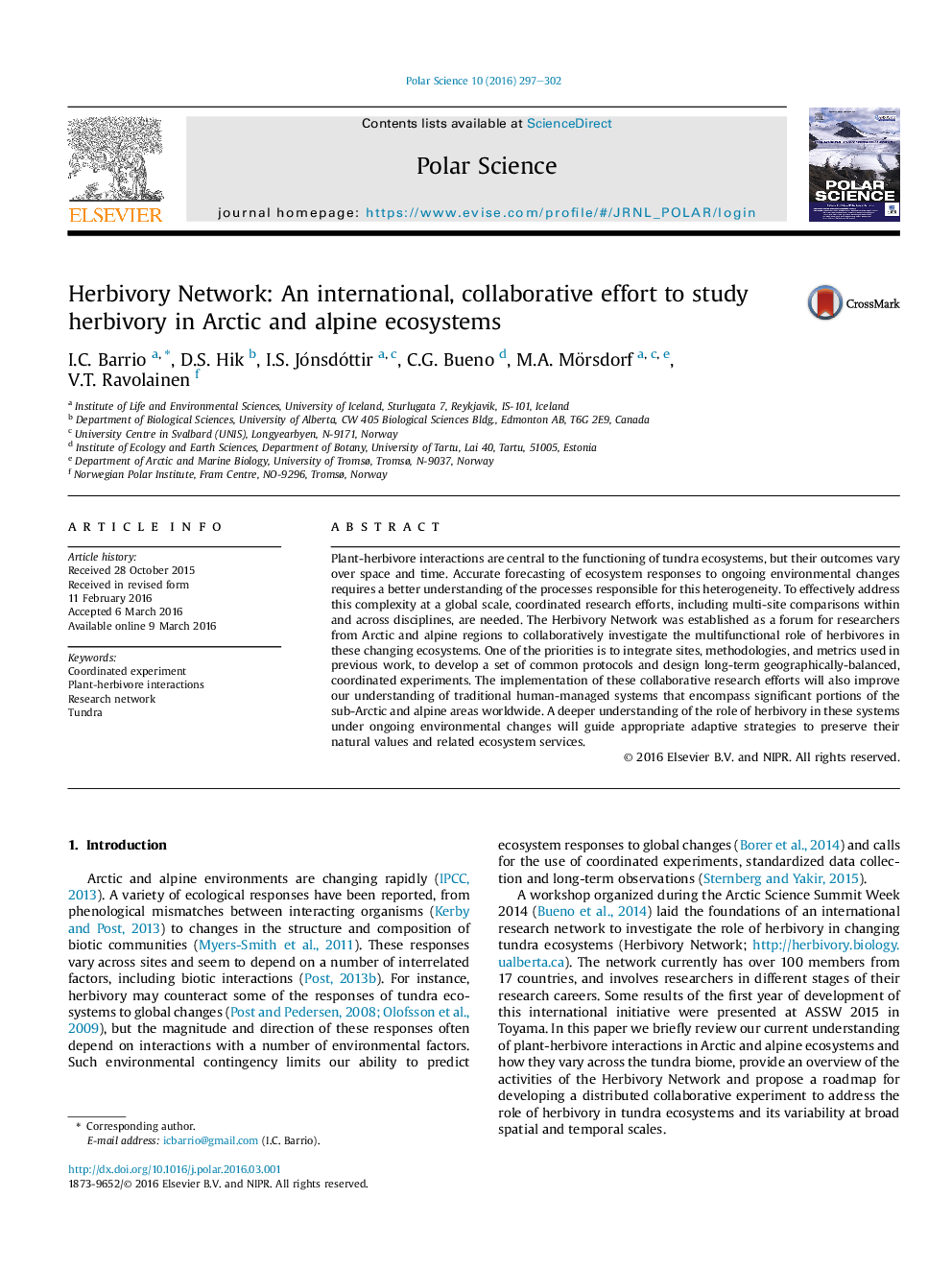| Article ID | Journal | Published Year | Pages | File Type |
|---|---|---|---|---|
| 5780588 | Polar Science | 2016 | 6 Pages |
Plant-herbivore interactions are central to the functioning of tundra ecosystems, but their outcomes vary over space and time. Accurate forecasting of ecosystem responses to ongoing environmental changes requires a better understanding of the processes responsible for this heterogeneity. To effectively address this complexity at a global scale, coordinated research efforts, including multi-site comparisons within and across disciplines, are needed. The Herbivory Network was established as a forum for researchers from Arctic and alpine regions to collaboratively investigate the multifunctional role of herbivores in these changing ecosystems. One of the priorities is to integrate sites, methodologies, and metrics used in previous work, to develop a set of common protocols and design long-term geographically-balanced, coordinated experiments. The implementation of these collaborative research efforts will also improve our understanding of traditional human-managed systems that encompass significant portions of the sub-Arctic and alpine areas worldwide. A deeper understanding of the role of herbivory in these systems under ongoing environmental changes will guide appropriate adaptive strategies to preserve their natural values and related ecosystem services.
